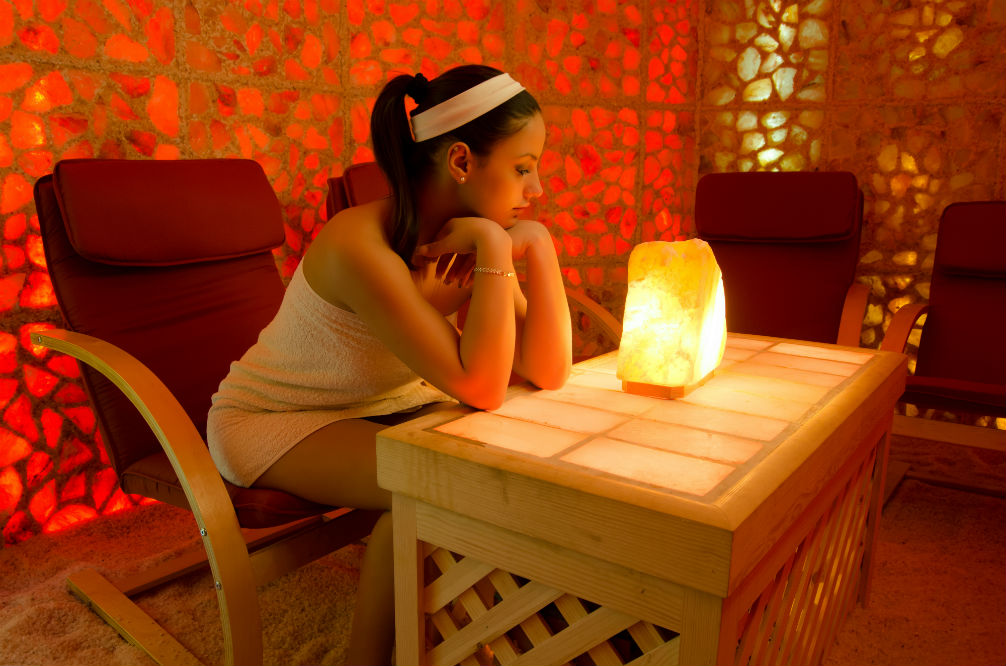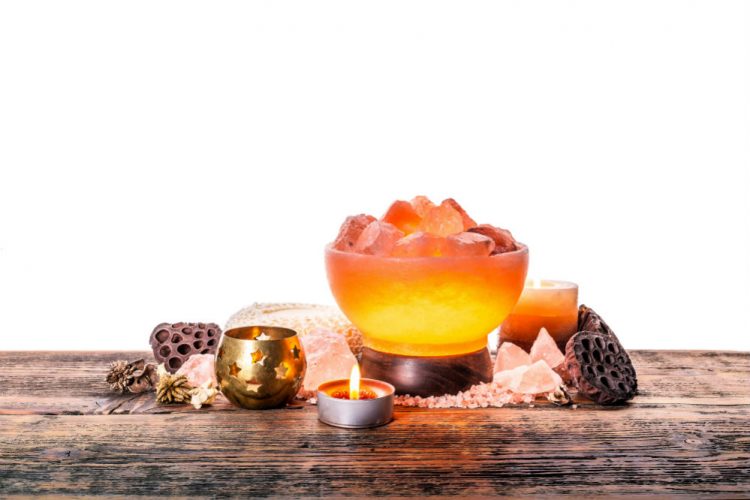Does the soft glow of the natural Himalayan salt lamp entice you to get one? Or has the promise of particular environmental or health benefits already left you in possession of one? If you’re not sure if you have the real deal or would simply like to be guided on making the right purchase, we’re here to let you in on how to tell if a salt lamp is real.
Apparently, nobody likes being tricked into buying a counterfeit, especially if you don’t mind paying a premium for the right deal. In the market, there will always be sellers who’d trick you into buying “the same, good old stuff” at a low price. Other vendors who would even make you believe that you’re getting the good stuff just because their products are priced just as high as, if not higher than the real product.
How to Tell If a Salt Lamp Is Real?
- It’s from Khewra Salt Mine, Pakistan.
Himalayan pink salt is mined from the western borders of the Himalayas. Check the bottom part of your lamp, the packaging, or elsewhere to determine the country of origin. If yours doesn’t indicate Pakistan, then it’s not genuine.
The opposite is not necessarily true though. Unscrupulous businesspeople who are just eager to make a sale may indicate that your salt lamp came from Pakistan when in fact it doesn’t. To be safe, get your Himalayan salt lamp from trusted companies and sellers. Doing your homework will save you the trouble of having to return the item—or worse, being stuck with an item that reminds you of the betrayal of your trust.
- It sweats!
Salt, whether rock salt or Himalayan salt, is hygroscopic. That means it absorbs moisture in the environment. It is this process together with the heat of the lamp that makes Himalayan lamps good in cleansing the air in the room. However, if you only have the salt lamp absorbing molecules in the air and none of the heat from the lamp causing moisture to evaporate, your salt lamp should naturally sweat, especially on humid or wet weather.
If your Himalayan salt lamp is turned off most of the time at such conditions, and it stays dry, we hate to break it to you, but you have a fake lamp. If the opposite is true, do turn on your lamp for at least 16 hours a day. This will not only fetch you the benefits from the lamp but also prolong its life. Your authentic Himalayan lamp will slowly dissolve if you just let it sweat days on days.
- It chips or breaks!
When your salt lamp arrived, did you find “crumbs” in the box? While that can be pretty annoying, that’s also good news! It means you have a precious Himalayan salt lamp in your possession. If there are none, don’t despair just yet. Maybe, yours was packed and handled exceptionally well.
Himalayan salt lamps are hard yet brittle. While it takes a harder force than a casual bump to break the whole thing, a part of it will naturally chip off from the pressure. If yours stays sturdy and has not so much as shed a particle from a bump, then gently pry a small piece with a knife. This should be your last resort though.
- It should be dim and uneven.
Another way to tell if a salt lamp is real is by looking at the light it gives off. Unlike standard night lights, your Himalayan salt lamp cannot be relied on to illuminate your room for late night reading. It should just glow a medium pink to a dark orange hue that’s calming enough to lull you to sleep or rest. And while a rare find, there are also white and red ones.
Also, you should notice an irregular pattern on the light, especially with the bigger and heavier ones. If you can see brighter and deeper shades in a big chunk of salt, that’s something worth celebrating. There’s no uniformity of thickness in a salt crystal, and this is what causes the irregular light pattern. Whether you have a lamp with a smooth or jagged surface, this lack of uniformity is noticeable.
- It’s expensive.
Genuine Himalayan salt lamps are not cheap. Pink salt lamps are pricey; whereas, the rare white and red ones are a few times more expensive. Whichever color you have, you should be understandably concerned if you got it cheap. While buying it expensive is not also a sure sign it’s real, the low price should readily sound an alarm.
- You start to notice some of the benefits it claims to provide.
Himalayan salt lamps are supposed to bring in a lot of benefits. Among them are cleaner air, reduced allergens, less stress, and better sleep. While there’s no scientific evidence to support these claims, there are people who have reportedly noticed such changes. And if you have experienced them yourself, then that’s a good sign—whether you’re experiencing real or placebo effects.
A good way to test it is by comparing a week without it and another week of using it in different seasons. If you have observed a marked difference in your sleep, energy level, or asthma attack frequency, then you may have a genuine Himalayan salt lamp—and a potent one at that. If you have observed none, then maybe you don’t have the real deal, or maybe it just doesn’t have that kind of effect on you.
- It comes with a good return policy.
Himalayan salt lamps are fragile. Shipping it can pose a great risk to the product. Vendors understand this and are usually ready to provide buyers customer-friendly return policies. If yours have a strict or inflexible refund or exchange policies, you have to proceed with care. The seller may be counting on you spotting too late that you have received a fake lamp. And while it’s still possible that a vendor with poor return policies may be selling real Himalayan salt lamps, you still have to ask yourself if you’d want to do business with such seller on a pretty fragile item.
Summary
While there are a lot of unscrupulous vendors out there, do not be discouraged or fearful of getting your Himalayan salt lamp. There are certain steps on how to tell if a salt lamp is real and measures you can take to correct a bad buy.
There are things about your Himalayan salt lamp that seem like imperfections, such as the dim illumination, the irregular light pattern, and the chipping off tendency, that you should be aware of and that you should welcome since they are a sign of authenticity.



